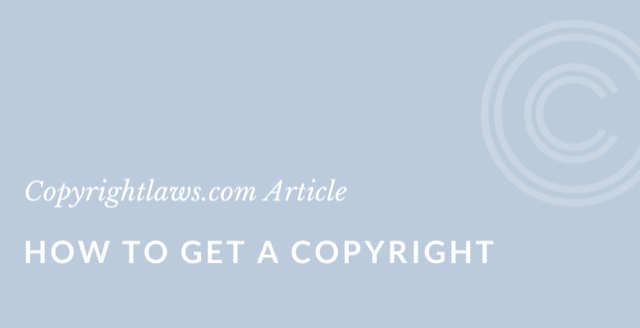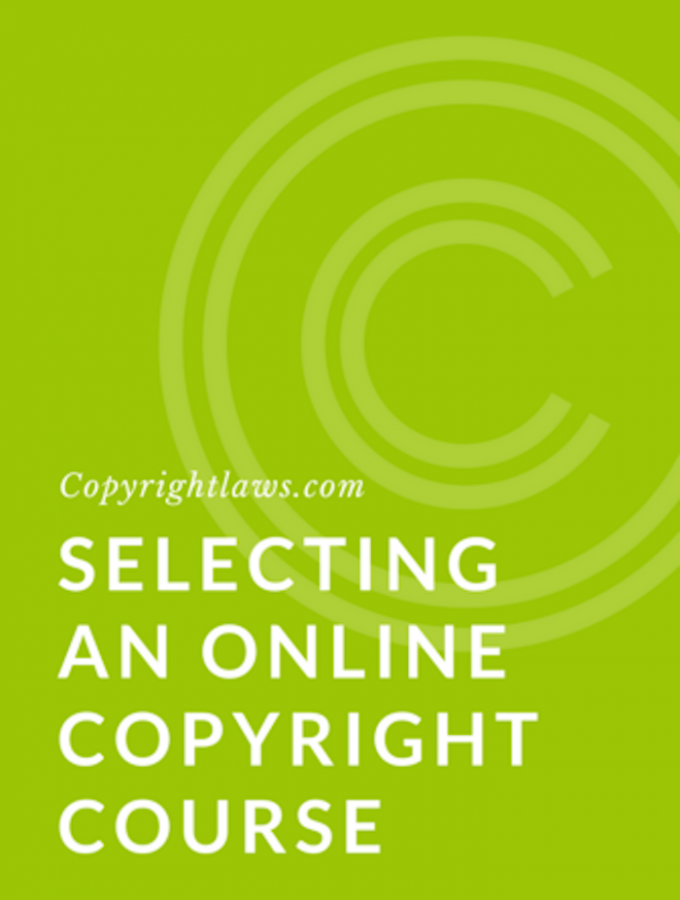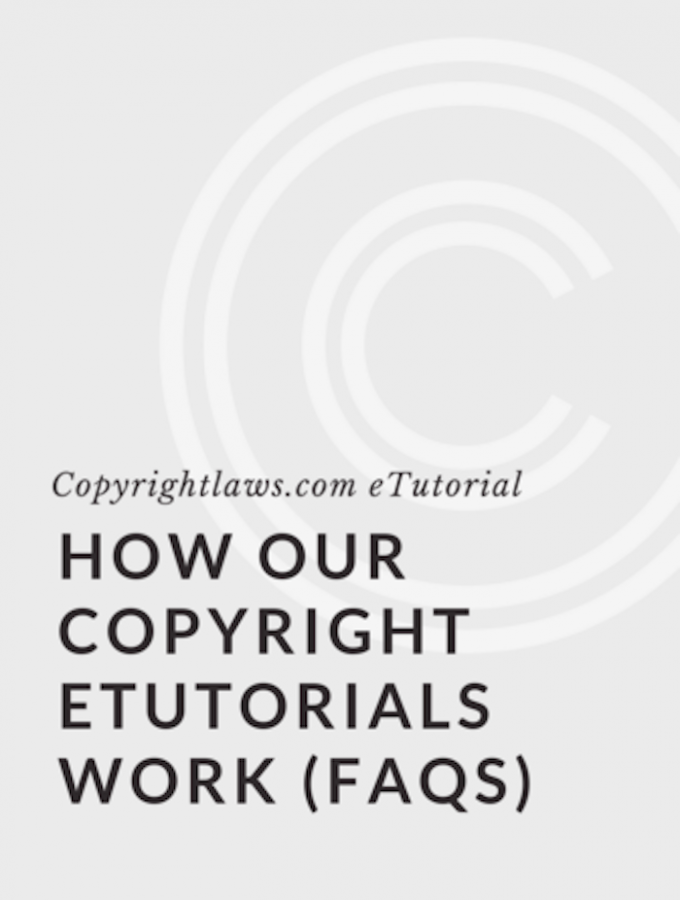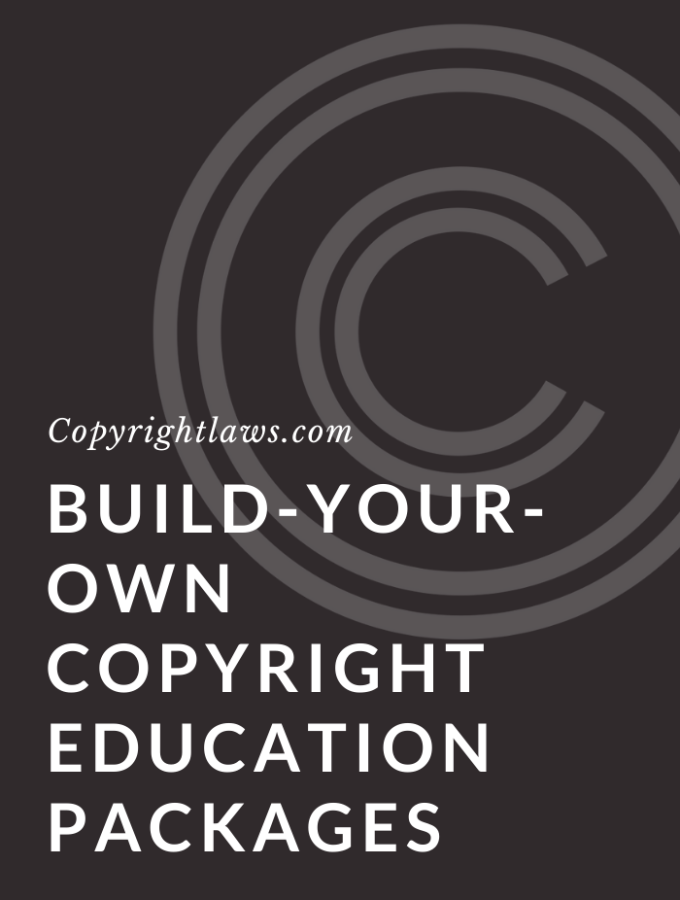
When it comes to how to get a copyright, you don’t need to do anything! That’s the best thing about obtaining copyright protection: it’s automatic in close to 200 countries around the world. For example, it’s automatic in the U.S. and Canada, and it’s automatic in Australia, France, India, Nigeria, and Slovenia.
Take a photograph, write a poem, compose a song ... it’s likely that you have a copyright-protected work. Below we explain how automatic copyright protection works, where you have that protection, and extra steps you can take as a copyright owner to ensure uses of your work by others are authorized by you.
What Is Copyright?
Copyright is quite literally the right to copy a work. It’s generally the sole and exclusive right of an author of an original work. Original, in copyright language, means that you have created it without copying someone else’s work. As an illustration of the term original, even if two people make a painting of the same tree, as long as each person makes their own painting and does not copy each other’s, then each painting would be considered original for copyright law purposes.
In the U.S., a work must have some “minimum amount of creativity” to be original. Just a spark of creativity is sufficient for copyright protection. For example, U.S. courts have ruled that a white pages telephone book lacks minimum creativity, but a yellow pages directory may have sufficient originality because it categorizes the information into subject headings.
Under the U.S. Copyright Act, copyright owners have a bundle of exclusive rights, including:
- Reproducing (e.g., photographing, scanning and digitizing)
- Performing in public (e.g., at a concert)
- Publishing in print (e.g., in a book) or in an electronic format (e.g., on the internet)
- Publicly displaying or exhibiting
- Adapting (e.g., a book into a movie script) and translating
- Publicly communicating
- Broadcasting
You have now created an original poem or a piece of art, written a book, or taken a photograph — is it protected by copyright? If it’s original, you’re on your way to copyright protection. Below we discuss fixation as an additional criterion for protection. You may also want to review a list of things that may be protected and how the complicated area of copyright works. See Copyright Law 101 for further information.
What Does Fixed Mean?
As stated above, in order to have copyright protection in a work, that work must be in some fixed form or fixed in a tangible medium. This could mean a lot of different things. Fixed means that it is saved in some way, whether that be online or physically. Examples include:
- Writing a poem in the notes application on your phone (or even writing a poem on tree bark)
- Saving an article on your computer’s hard drive or a USB drive
- Vacation photos from your phone or SLR camera
There are many different types of things that would not be considered fixed and therefore wouldn’t be protected by copyright. A few examples of what these could be are:
- An improvised concert
- A speech or lecture not previously written down
- A stand-up comedy routine that hasn’t been recorded or written down.
In these non-fixed situations, if your original work is recorded, written down or digitally saved, you’ll then have automatic copyright protection in it.
Automatic Copyright Protection Around the World
Once you have copyright protection in the United States, you automatically have copyright protection in close to 200 countries across the world. See our article on how international copyright law works.
Do You Own the Work?
When thinking about how to get a copyright, you also need to consider whether you in fact own the copyright in the work you created. There are many different cases in which the copyright in your original work may not be your own. For example:
- You sold or assigned the copyright to someone else or to a company or organization
- Your contract with your employer states that the copyright belongs to them
- Your work falls under an employment provision in your country’s copyright act that states that all work created in the course of employment belongs to your employer
As you continue reading below, it's important to know that, in general, it’s the copyright owner (who may or may not be the author of the work) who is responsible for posting a copyright symbol on it, applying a Creative Commons license to it, or registering it in a country’s copyright office.
Copyright Registration and the Copyright Symbol
Although copyright protection is automatic in many countries, you may still want to take certain steps to ensure others understand that your work is protected and to help you enforce your rights in your work for unauthorized uses. These include registering your work in your country’s copyright office and using the international copyright symbol.
Registering a Copyright Work
Although registering has real advantages, you do not need to have your work registered in the U.S. or in any of the almost 200 Berne Convention countries to have copyright protection in other countries. All countries that are members of the Berne Convention, the leading international copyright treaty, will provide you with the same copyright protection that they provide copyright authors and owners in their own country.
Although this may be the case, registering your work with the U.S. Copyright Office (or your own copyright office if you’re outside the U.S.) does have real benefits that make it worthwhile in certain circumstances. Some of the benefits of having a record of your registration in the U.S. Copyright Office are that you will be assumed to be the copyright owner and it will be easier to prove that you are the owner of the original work.
Later in this article you will learn about a new international initiative called WIPO PROOF that can also provide benefits for online works. While it does not replace national registration, it is, however, a substitute for copyright registration in a national copyright office.
A few points about registering works in the U.S. Copyright Office:
- If you live in the U.S., registration is a precondition for commencing a copyright infringement action (this does not apply to those outside the U.S.).
- Registration may take place at any time. So, if you don’t register your work shortly after it’s created, but you want to commence a copyright infringement suit, you can register before you commence the suit. However, the earlier you register, the better.
- Registration prior to infringement or within three months after publication of a work will make you eligible for statutory damages and attorneys’ fees.
- Anyone in the world may register their works in the U.S. Copyright Office.
Use of the Copyright Symbol
Use of the copyright symbol, ©, is separate from copyright registration and can have great benefits to you with minimal effort on your part. To reiterate, even if you don’t register your work, you can still use the copyright symbol.
Like registration, use of the copyright symbol is voluntary. However, it’s highly recommended. Why? You’re indicating to the world that your work is protected by copyright and that others cannot copy it without your permission. There are other advantages, such as identifying yourself as the copyright owner and making it easier for others to find you to ask for permission (e.g., by including a link to your website or email address).
For information on why and how best to use the international copyright symbol, see The International Copyright Symbol.
WIPO Initiative To Assist Creators
As the world increasingly moves online, the protection and use of intellectual property (IP) also changes. From new treaties to international discussions on protecting and using IP, the World Intellectual Property Organization (WIPO) is often a leader in these changes.
In May 2020, WIPO initiated a way to help creators in WIPO member countries establish proof that they are in fact the creators and copyright owners of their works. WIPO PROOF goes beyond assisting authors of copyright works and is intended for:
- Creative works and designs (e.g., movie, textile designs, software code)
- Trade secrets and know-how (e.g., recipes, compilations/lists, formulas)
- Research and data (e.g., collections of data, research results)
- Other digital assets (e.g., contracts and version history of agreements)
WIPO PROOF provides a way to create a timestamp for any online file or content. By providing this evidence, this is another way to protect online files by showing their existence at a certain date and time. This WIPO PROOF can be used as another way to strengthen your case in a legal dispute for unauthorized use. See more information about WIPO PROOF.
How To Get a Copyright
In summary, how do you get a copyright? You need to:
- Create an original work
- Make sure the work is in a fixed form
Although there’s no need to register the work or mark it with a ©, these may be helpful things to do to remind others that copyright exists in the work. And if you’re going to distribute your work and would enforce your rights for any unauthorized uses, then consider registering your works with your country’s copyright office.



